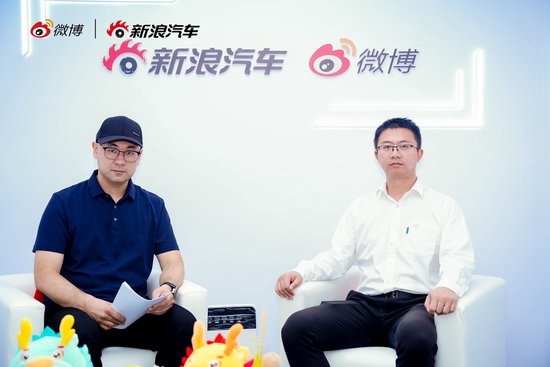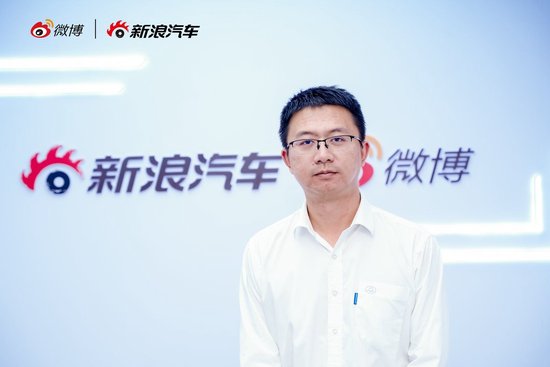On November 15, the 22nd Guangzhou International Auto Show officially opened. The auto market has entered a phase of stock competition. Chinese new energy vehicles, focused on electrification and intelligence, drive high-quality development in the industry. This year’s auto show continues with the theme “New Technology, New Life.” It serves as a barometer for the development of the Chinese auto market. The show collaborates with the global auto industry to usher in a new era. Seventy-eight vehicles will make their global debut, including six from multinational companies. The total number of exhibited vehicles reaches 1,171, with 512 being new energy vehicles. Together, they showcase new technology and innovations for the new era. Executives shared their insights. Shen Chao, senior manager of product strategy at SAIC Maxus, stated that since its inception, all SAIC Maxus models have followed global design standards. In every country and market where SAIC Maxus operates, its MPVs have achieved top ratings in Euro NCAP, ANCAP, and C-NCAP.
Shen Chao: Hello, I am Shen Chao, Senior Manager of Product Strategy at SAIC Maxus. Sina Auto: At the Guangzhou Auto Show, we saw a rich variety of models at the SAIC Maxus booth. Can you highlight some key models for our audience? Shen Chao: We brought many vehicles. In the MPV series, we showcased the G10, which has set a record of one million kilometers without major repairs. This model has been around since 2014. The newly launched G10 MAX is here at the show. We also have the D9 Super Hybrid, our flagship hybrid model. It requires refueling just once a year and charging once a week. The G50 PLUS, a long-standing star in the family MPV market, continues to perform well at the 100,000 yuan (13810$) price point. We introduced new models in the New Road and Dada series. In the Dada series, we have the Dada M1 passenger version. The New Road series features the V70 and V90. These vehicles offer flexible space configurations for cargo, passenger transport, and family use, meeting multifunctional needs. In the pickup segment, we present the Starry Sky Off-Road version and Starry Sky H. These are high-end diesel models, well-known among off-road pickup enthusiasts. In the RV sector, we introduced the Traveler RVLIFE. This product caters to the popular camping trend and is very appealing to young outdoor campers. Sina Auto: Maxus offers a diverse range of products, including off-road pickups and RVs. You mentioned the Dada series hybrid models, which have gained wide attention. The D7 and D9 Super Hybrid systems have become market highlights. What innovations and features does SAIC Maxus’s hybrid technology offer in terms of engine, transmission, and battery? Shen Chao: The engine is a new generation 1.5T hybrid engine. It has a high thermal efficiency of 43%. We designed it for hybrid use, which, combined with our new technology, results in lower fuel consumption, stronger power, and reduced noise. We use a “P1+P3” dual-motor configuration. The P1 motor acts as a generator. It shares the same axis as the engine. This design eliminates friction. With only one shaft, there is no gear-to-gear friction, leading to high efficiency and low noise. The engine can efficiently charge the battery from the start, providing a 100% electric driving experience. The P3 motor delivers 176 kW of power and 390 Nm of torque. This performance allows strong power in electric driving mode or during overtaking. It gives the MPV a robust driving feel, making it feel lighter than it is. Our battery has an energy density greater than 184 Wh/kg. This creates more space and longer range. With this battery, our interior space is very spacious. We use direct cooling with refrigerant and parallel flow channels. This design cools the battery 30% faster than other batteries on the market. The temperature difference between cells stays within 5%, making it ideal for MPV customers. Sina Auto: You mentioned that the design suits MPV needs. I relate to that deeply. Ten years ago, I drove the G10, and it left a strong impression. You noted that the P1 motor’s direct drive design effectively reduces NVH issues caused by gears. The overall noise performance at the rear of the vehicle is excellent, making it very suitable for MPVs. I have a question: how do you achieve electric driving? You answered that. You also mentioned one fuel fill per year and one charge per week. How do you achieve that? Shen Chao: We charge once a week. The CLTC pure electric range exceeds 225 kilometers. The 7 Super Hybrid range is 235 kilometers. If we drive about 30 to 50 kilometers daily, we only need to charge once a week. We define electric driving in urban conditions. Daily commutes usually stay below 80 kilometers. In this scenario, with a range over 12%, the engine won’t start in the city. We have a pure electric mode. This means no cost. You can charge at home. In urban settings, it costs nothing. Pure electric driving eliminates engine vibrations and noise. With a full charge and full tank, you can travel over 1300 kilometers. Our engineers have achieved 1600 kilometers, though they drive economically. The 1300 kilometers aligns with the CLTC standard. This setup provides an extensive range. When driving on highways, the engine engages without you noticing. We invited many media and clients to experience our vehicles on highways. They often ask if we still use electricity, worried about battery depletion. Upon checking the dashboard, I found the engine had quietly started. Customers hardly noticed. The engine and motor share a design. When the engine starts, it begins charging. After exiting the highway, the battery remains around half full. It doesn’t deplete with continuous use. Once in the city, the vehicle automatically switches back to pure electric mode. Sina Auto: Yesterday, Sina Auto held a sharing session. We analyzed recent observations from Weibo users. We found safety remains a top concern. A prominent topic was their deep understanding of the 2000MPa concept. We know SAIC Maxus has a high pursuit of safety. What efforts has SAIC Maxus made in the MPV sector? What are the standout achievements? Shen Chao: SAIC Maxus designed all models according to global standards from the start. The G90 model underwent the Euro NCAP five-star safety crash test before its domestic launch. It became the first MPV to achieve dual five-star safety certification from both Euro NCAP and Australia’s ANCAP. It scored first in adult protection, child protection, pedestrian protection, and active safety tests in Europe and Australia. It set the best score for frontal collision and achieved full marks in rear-end tests, making history in the new EU five-star crash test. The G90 also scored five stars in the 2024 Euro NCAP safety crash test and became the only MPV to achieve full marks in all four crash test conditions since the new regulations in 2020, breaking industry records. After receiving the ANCAC five-star certification, the G90 ranked first in the latest China New Car Assessment Program for MPVs. It also achieved the highest scores in occupant protection, pedestrian protection, and active safety. It is the only MPV to hold dual five-star safety certification in China and Australia. In every country we enter, our MPV ranks first in Euro NCAP, ANCAP, and C-NCAP. Sina Auto: The SAIC Maxus MPV is very popular in Hong Kong. It features electric power, advanced technology, and low energy consumption. What key points do you think will help it surpass the Alphard in Hong Kong? Shen Chao: Several reasons explain our success in Hong Kong over the Alphard. Our monthly sales outpace theirs significantly. First, vehicles in Hong Kong rarely travel outside the area. Our electric models have a substantial energy advantage over fuel models. With over 500 kilometers of range, our vehicles meet their needs perfectly. Electricity costs much less than fuel. Although our overall prices are similar, our lower operating costs attract buyers. Second, our technology and comfort levels far exceed those of the Alphard. Even celebrities like Chan Pak Cheung and Wong Cho Lam bought our vehicles after test-driving them. This isn’t due to advertising; they discovered the value after purchasing. After buying, everyone noticed the car’s strong comfort and technology. Hong Kong people like mainland cars. However, it is hard to sell mainland cars there. We completed the European crash tests. Now, we can sell them.

